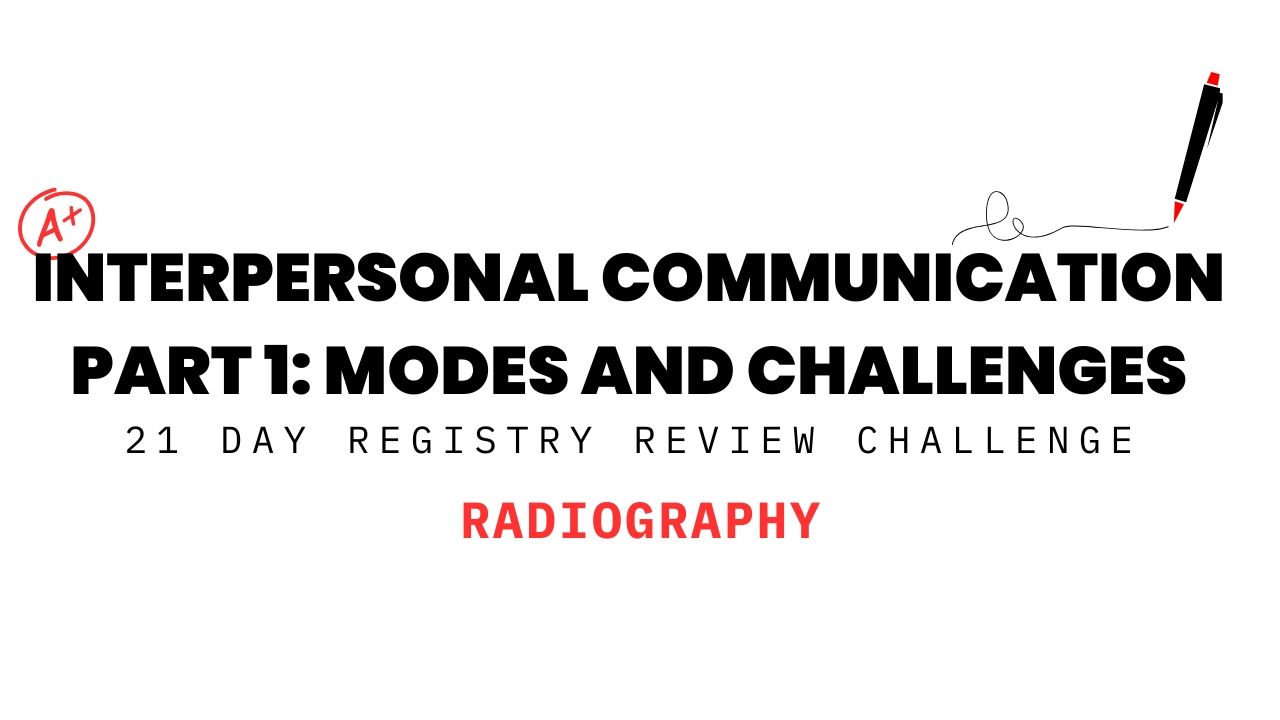
When you enter an imaging suite, it’s easy to focus on the machine: the hum of the generator, the glow of the monitor, the rhythm of the workflow. But beneath all of this, there is a quieter current — one that powers everything you do in patient care: communication.
Interpersonal communication is more than words. It is the art of connecting science with humanity — of translating anatomy and physics into empathy and trust. As Instructor Erica Dellis explains, communication shapes every moment of interac...

There’s a moment every student in radiography faces: when the material stops feeling like test content and starts feeling like a mirror. The ARRT® Standards of Ethics are that mirror. They reflect not just what you know, but who you are becoming — the kind of technologist who deserves the trust of patients, colleagues, and the profession itself.
The Standards of Ethics, published by the American Registry of Radiologic Technologists® (ARRT®), are far more than a list of professional rules. They are the ...
The Intersection of Law and Ethics in Radiography
Every profession operates within the twin boundaries of law and ethics — but few carry the profound responsibility that radiologic technologists do. As a future radiographer, you assume a dual role of trust and precision: delivering technically flawless diagnostic imaging while safeguarding patient dignity, safety, and rights.
In radiography, the law defines the limits of action, while ethics gives those limits meaning and integrity. Together, they cre...

Every radiologic technologist begins their journey with a simple yet profound realization: every patient who steps before your imaging table is entrusting you with something sacred. It’s not just their body being scanned — it’s their story, their dignity, their vulnerability. To protect that trust is not a procedural duty; it is the essence of your professional identity.
In the language of radiologic ethics, patients’ rights are not abstract principles. They are living guardrails — moral and legal stan...

Teaching is the best way to grow in any discipline. This is what I tell the students who take the 21 Day Challenge... “if you want to learn, you have to approach your studies as if you were going to teach it to someone else.” And I have them do that as part of the assignment each day.
It all starts with notes. And I want to share something with you that I was meditating on early this morning (at the time of this writing).
If you don't know the difference between note-Taking and note-Making, you'll con...

I recently interviewed for a senior position, and it went really well. As I reflected on what made it successful, I started wondering if the same principles could apply to a radiologic technologist interviewing for an x-ray role. Turns out—they do.
Part 1: Entering the Arena
Between July and October of 2021, we saw millions of Americans leaving their jobs, opening up an extraordinary number of healthcare positions—including in radiologic technology. If you’re a recent graduate from an x-ray program, y...
How the New Imaging Assistant (IAMR) Credential Redefines the MR Experience
As healthcare evolves at an accelerating pace, our ability to deliver high-quality, safe, and human-centered care hinges not just on technology—but on teams. The future of patient experience will be shaped not by the machines in the room, but by the people who guide patients through them.
That’s why the American Registry of Radiologic Technologists (ARRT®) is making a bold move that puts people at the center of one of medicine...
Legal knowledge is a critical, yet often underestimated, component of professional competence for Radiologic Technologists (RTs). While technical proficiency and patient care are front and center in daily practice, it is the understanding and application of legal principles that ensures safety, ethical integrity, and protection—both for the patient and the practitioner.
This comprehensive blog series explores the foundational legal issues that intersect with the responsibilities of radiologic technologis...
In the complex world of healthcare, patients are often placed in vulnerable positions, relying on professionals not just for treatment, but also for advocacy and respect. This is where patients’ rights come into focus—a framework that ensures individuals receive care that respects their dignity, autonomy, and legal entitlements. Whether in a hospital, clinic, or diagnostic imaging center, understanding these rights helps patients make informed decisions and safeguards them against unethical practices.
On...
Patient Positioning
- Position the patient lying on their back or sitting upright, with the head centered and straight.
- Adjust the midsagittal plane (MSP) so it's aligned vertically and perpendicular to the image receptor.
- Position the orbitomeatal line (OML) perpendicular to the IR surface. If the patient cannot tuck the chin sufficiently, use the infraorbitomeatal line (IOML) instead, adjusting the tube angle accordingly.

Central Ray (CR)
- Angle the x-ray beam 30 degrees downward (caudad) w...
Introduction: More Than Just a Hand
History has a habit of casting its light on the names it deems worthy, leaving the rest to dwell in shadow. Wilhelm Röntgen, the discoverer of the X-ray, is such a name—illuminated in textbooks, immortalized in plaques, celebrated in the annals of science. But in the soft penumbra just beyond that light stands another figure: Anna Bertha Ludwig, the woman whose hand, offered without hesitation on a winter night in 1895, became the first human subject in a discovery tha...
Getting into an X-ray (radiologic technology) program is competitive. Seats are limited, and the selection process is designed to find students who are not only academically prepared but also professionally ready. If you’re worried about getting denied, know this: a thoughtful, strategic, and complete application can dramatically improve your chances.
This guide walks you through how to build a winning application—from academic prep and clinical exposure to personal branding and professional development....








